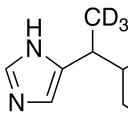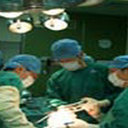Association between hypoxemia and anemia following arthroplasty: A pilot clinical study.
Nyckelord
Abstrakt
Hypoxia and anemia are common complications following joint arthroplasty. Whether hypoxia indicates that a patient is anemic and whether anemia causes a decline in arterial oxygen pressure accompanied by hypoxemia are not completely understood. The aim of the present study was to determine the association between hypoxemia and anemia following arthroplasty. A total of 135 patients who underwent arthroplasty at the China-Japan Friendship Hospital between January and May 2013 were retrospectively analyzed. The patients were divided into five groups depending on the type of arthroplasty they had experienced: Unilateral total knee arthroplasty (TKA), bilateral TKA, unilateral total hip arthroplasty (THA), bilateral THA or unilateral unicompartmental knee arthroplasty. Perioperative peripheral oxygen saturation (SpO2) and hemoglobin (Hb) levels were assessed, and the associations between the changes in SpO2 (ΔSpO2) and hemoglobin (ΔHb) levels on the first and third postoperative days (PODs) were analyzed using Pearson's correlation test for each group. The perioperative SpO2 curves for the various groups were typically at their lowest on the day of surgery. Significant hypoxemia was observed on POD 0-2, although a stable recovery curve was observed on POD 3-5. Trends in ΔHb were observed among the 5 groups, with the lowest Hb value observed predominantly on POD 2 and 3. By POD 4 and 5 Hb levels had recovered, with a steadily and consistently increasing curve. There was no statistically significant correlation between ΔSpO2 and decrease in Hb levels (P>0.05). SpO2 levels should not serve as a clinical indicator of the incidence and severity of anemia in patients who have undergone primary arthroplasty. To a point, the degree of postoperative anemic status does not affect SpO2 levels.



